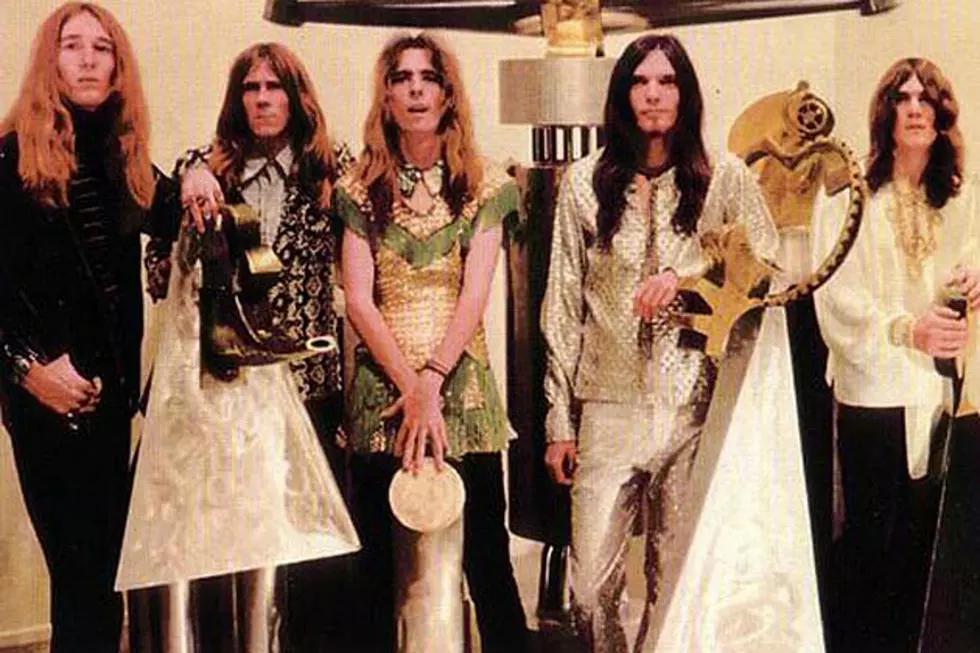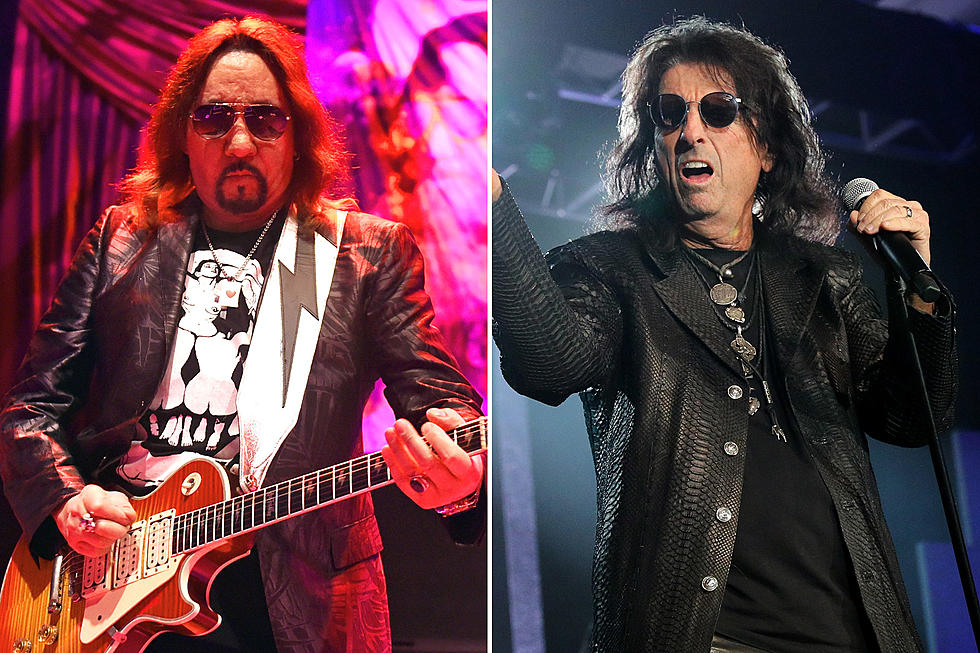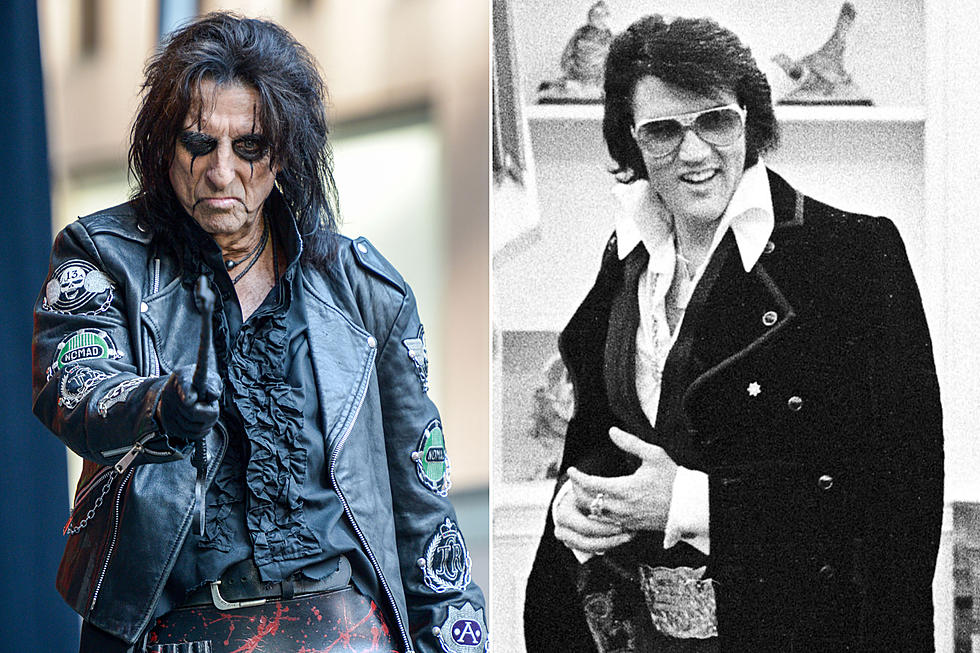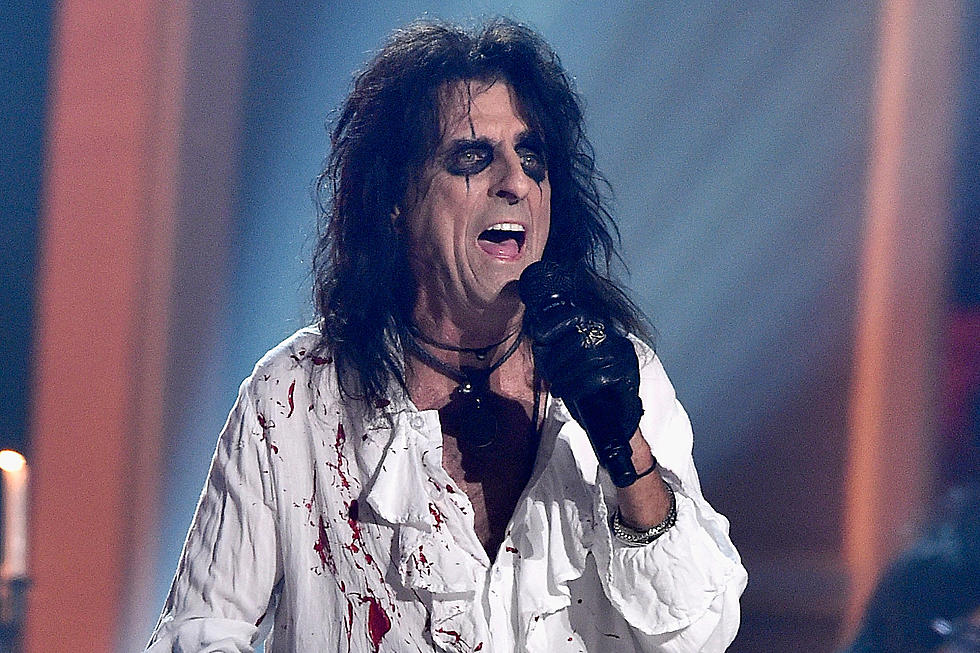
Alice Cooper Drummer Neal Smith Recalls the Early Days: ‘We Didn’t Care If Somebody Loved Us or Hated Us’
The original Alice Cooper band helped make a name for themselves on the strength of their onstage antics. As drummer Neal Smith tells us, it was all about giving the crowd a night to remember.
“We didn’t care if somebody loved us or hated us, but we never wanted them to forget us,” Smith says. “We’d be onstage, and people were not digging it, so we thought let’s do this big spectacular show. Often, people would throw shit at us and we would just throw it right back. We did what we had to do to make the crowd take notice. One of our tricks was feather pillows and CO2, which was a phenomenal thing onstage. Sometimes Alice would take a hammer to a watermelon. … They had no idea what to expect! A lot of it was born out of frustration and using what we had at our disposal.”
Smith joined Alice Cooper in 1967, replacing the band's original drummer, John Speer, at a time when they were still called the Spiders. They moved from Phoenix to Los Angeles and renamed themselves the Nazz, after the Yardbirds' song “The Nazz Are Blue." But after hearing that there was an East Coast band with the same name, which happened to be led by Todd Rundgren, they changed theirs. The story goes, they consulted a Ouija board, which pointed them to "Alice Cooper."
“That’s absolutely true!” Smith recalls with a laugh. “To make an impression, we came up with the name Alice Cooper, and for the hell of it, we started calling Vince [Furnier, the frontman's real name] ‘Alice.’ He didn’t mind. We just thought, 'Okay, we’re an all-guy band called Alice Cooper. The singer’s name should be Alice Cooper.'”
Watch Alice Cooper Perform 'Reflected'
It was a far cry from the Byrds, the Turtles, or even Jefferson Airplane, and one might have mistaken Alice Cooper as a harmless folksinger. So imagine the shock audiences got when out walked this insane bunch of misfits. As if the name wasn’t odd enough, the look of the band was also unlike anything happening at the time. With longer-than-long hair and a fashion sense of thrift-shop drag crashing into faux Hollywood glamour at an acid-test ceremony, the band looked like no one else.
Their sound, which by this time was melding a Yardbirds-style attack with Syd Barrett-inflected sensibilities, was as jarring as their look. The whole package caught the ears and eyes of Frank Zappa.
“You know it takes something really off-the-wall to catch the attention of Frank. And when he heard us, he signed us and really gave us our first break,” Smith says. “It was only about a year from arriving there until we started recording, which, at the time, seemed like a long time, but we were very lucky in a lot of aspects.”
Zappa signed the band to his new Straight/Bizzare label and began recording its debut, Pretties for You, which was released in June 1969. It was also very well-rehearsed, as live recordings from the period show; the odd stops and starts and weird shifts in the songs were not some trick of the studio.
Watch Alice Cooper Perform 'Levity Ball'
“We essentially recorded those songs live in the studio,” notes Smith. “It really got the vibe of what we were like at the time onstage. We were in the studio, setting up and going through a song, and we said ‘Okay, Frank, we’re ready to record,’ and he would say, 'We already recorded. It’s done.'”
Zappa’s desire to capture the band's first take without over-thinking ultimately paid off for listeners. Pretties for You sounds unlike any other Alice Cooper album. "Zappa was supposed to produce the first album, but truth be told, he really didn't," Smith adds. "We did it ourselves with the help of a couple of the engineers."
The style of the band at this point was heavily indebted to the first Pink Floyd album, The Piper at the Gates of Dawn, but filtered through their own color spectrum. The Pink Floyd connection went beyond mere sonic hat tipping, since Alice Cooper played host to Pink Floyd on the British band's first U.S. tour.
“We were the house band at the Cheetah for a period of time in ’67,” Smith recalls. “One of the perks was we could go see any of the bands playing there. Pink Floyd were there one week. I remember the first or second song they played, Syd went up to sing and boom! A spark came from the microphone and hit his lip. He just put his arms down to his sides, backed about a foot away from the stand and just stood there like a statue for the rest of the night. After the show, they came back to our house and partied with us all night long. Syd walked in like a zombie. He didn’t talk to anybody, he just stood there. He seemed a bit psychotic, and the mass quantities of LSD certainly didn’t help.”
By the time of the band’s next album, Easy Action, they would relocate to Detroit and another new chapter would begin, one that would soon take it into charts and arenas around the world. Still, neither of those first two records captured the public's imagination. But then came 1971's Love It to Death, which featured the hit "I'm Eighteen," and which gave Alice Cooper the Top 40 success they'd been waiting for.
“We thought Pretties for You was going to be a hit,” Smith says now. “We thought we were going to be the next Beatles. That was in our heads. People would say, ‘What did you think when 'Eighteen' broke? How do you feel?' Well, we felt like we were about two or three years behind because we were ready to go with Pretties for You.”
Alice Cooper Albums Ranked
More From KLUB Tejano 106.9










